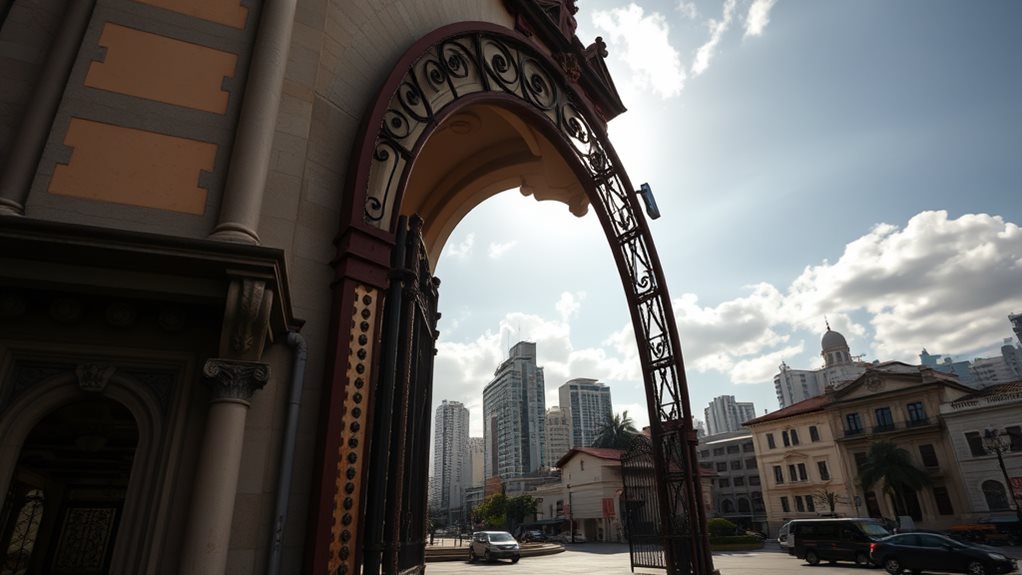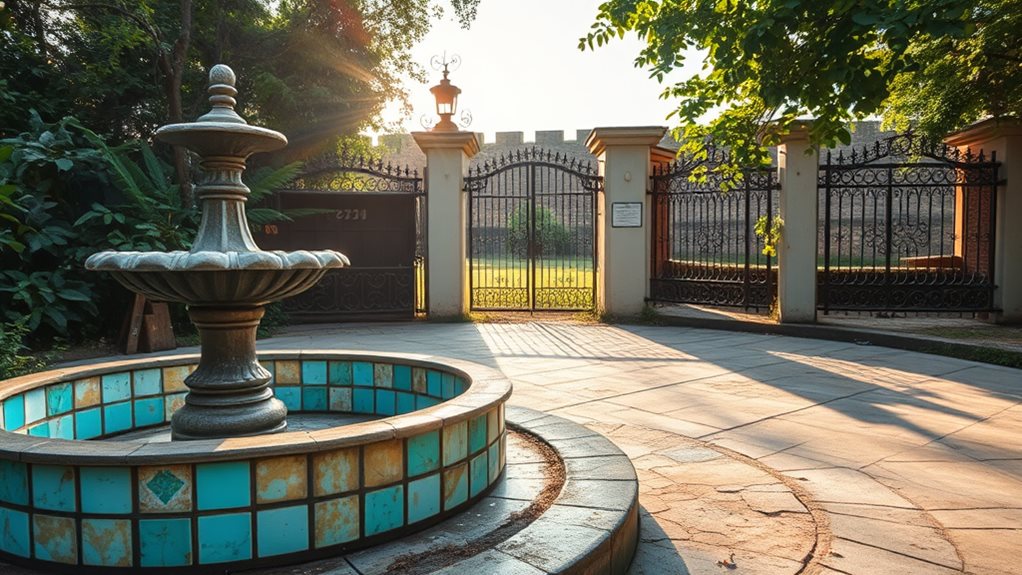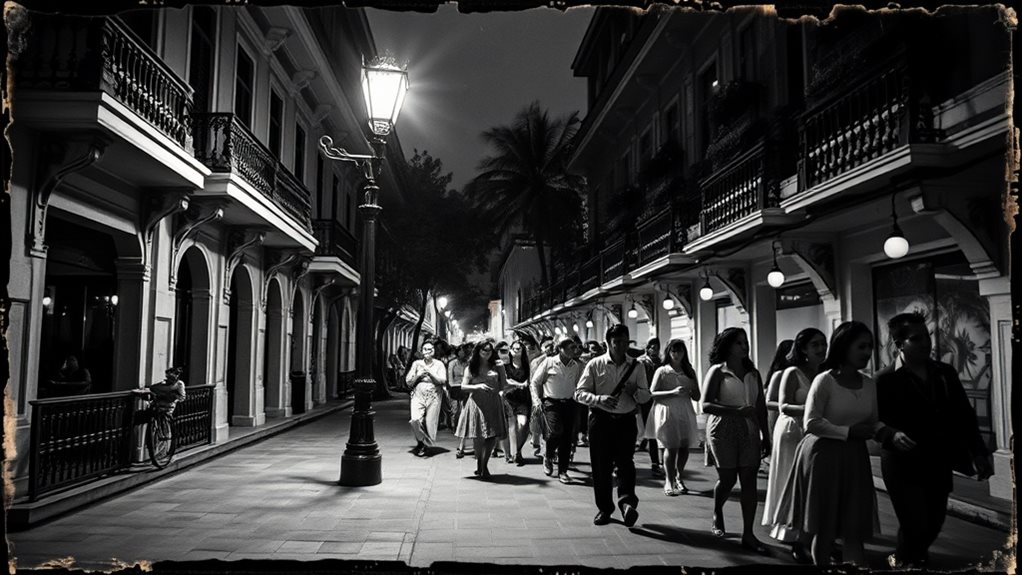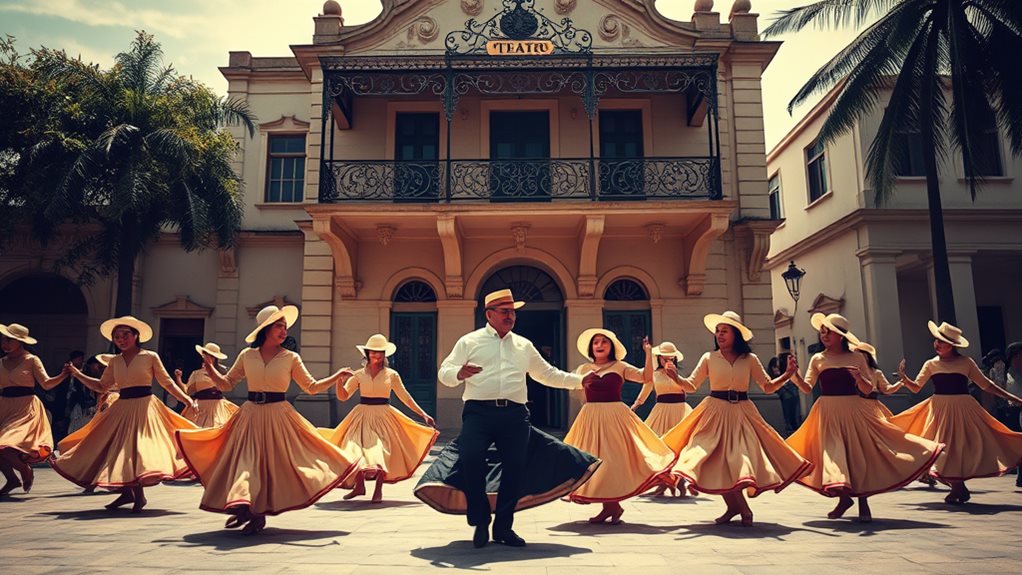Paseo De Magallanes: A Symbol of Manila’s Rich Cultural Heritage****
Paseo De Magallanes is a historic thoroughfare in Manila that embodies the city’s complex cultural identity**. This iconic street has evolved over time, reflecting the city’s transition from Spanish colonization to modern-day cultural hub**.
Origins as a Symbol of Spanish Navigation
In the 16th century, Paseo De Magallanes was a major route for Spanish navigators, including Ferdinand Magellan**, who led the first expedition to circumnavigate the globe. The street was named in his honor, recognizing his role in shaping Manila’s history**.
Cultural Exchange and Resilience
Over time, Paseo De Magallanes became a melting pot of cultures, with Spanish, Chinese, and Filipino influences blending together. The street witnessed the rise of Filipino nationalism****, as the country fought for independence from Spanish rule.
Modern-Day Cultural Hub
Today, Paseo De Magallanes is a thriving cultural destination, hosting various festivals and events that celebrate Manila’s diverse heritage. The street is lined with historic landmarks, such as the Magallanes Church and the Plaza Magallanes, which testify to the city’s rich history****.
History of Paseo De Magallanes

The Construction of Paseo de Magallanes****
The construction of Paseo de Magallanes began in 1848, initiated by Spanish Governor General Narciso Claveria. Originally intended for Cebu, the monument was later built in Manila instead. Voluntary contributions and donations made the construction possible, showcasing the community’s spirit and civic engagement during the Spanish era.
Design and Significance
The Paseo de Magallanes was designed to honor Ferdinand Magellan as a navigator and explorer. The monument features a marble pedestal supporting a high column pillar adorned with bronze ornaments imported from Europe. This architectural piece represents Spanish Navigation and Colonial Commemoration, recognizing Magellan’s groundbreaking achievement as the first to circumnavigate the globe in 1521.
Historical Significance and Symbolism
As a symbol of Spanish colonial presence and influence in Manila, the Paseo de Magallanes holds great historical significance. The monument served as a prominent landmark for ships entering Manila through the Pasig River. Its significance is comparable to that of the Statue of Liberty, making it an iconic representation of Spanish colonial history in the city.
Location and Development of Paseo De Magallanes
Location of Paseo De Magallanes****
Paseo de Magallanes is strategically situated in the heart of Magallanes Village, Makati City, at the intersection of South Luzon Expressway (SLEX) and EDSA. This prime location provides easy access to major business and commercial establishments in the city, as well as top shopping centers like Alphaland Southgate Mall, Makati Square, and Greenbelt Mall.
Nearby healthcare facilities include Makati Medical Center and Philippine Orthopedic Center.
Development of Paseo De Magallanes
Paseo de Magallanes is part of the elite subdivisions developed by Ayala Land in the early 20th century. It’s adjacent to Galeria de Magallanes, a luxury low-rise condominium development****.
The area features a mix of residential, commercial, and recreational spaces, and is equipped with world-class facilities and amenities. This strategic development provides easy access to destinations within Metro Manila and southern provinces like Laguna and Batangas.
Benefits of Paseo De Magallanes
The strategic location and development of Paseo de Magallanes make it an attractive place to live, work, and play.
The area’s urban planning and community engagement initiatives cater to the needs of its residents and visitors, providing a convenient and accessible lifestyle.
The Magallanes Monument: A Landmark of Spanish Manila

The Magallanes Monument: A Testament to Spanish Colonialism****
The Magallanes Monument stands as a significant landmark in Magallanes Village, Makati City, commemorating the legacy of Spanish colonialism in the Philippines. This monument honors the explorer Ferdinand Magellan, who navigated the uncharted waters of the Pacific.
The monument’s design features a marble structure inspired by Roman Doric columns, topped with a bronze globe symbolizing Magellan’s navigational achievements. The anchor and laurel symbols on the capital-like ornamentation reflect the colonial era’s appreciation for his feats. The inscription “A HERNANDO DE MAGALLANES 1848” on the plinth celebrates Magellan’s bravery.
Built as a Colonial Commemoration of Magellan’s role in Philippine history, the monument served as a landmark and greeting point for ships entering Manila via the Pasig River.
Although it was destroyed during World War II, its legacy lives on through black-and-white photographs and illustrations. Remnants of the monument, such as Magallanes Drive, remain as a reminder of its former presence.
The Magallanes Monument is a poignant reminder of the country’s rich history****, and its story is worth remembering.
Cultural Significance of Paseo De Magallanes
Paseo De Magallanes is more than just a stroll through a popular outdoor destination in Makati City; it’s an immersive experience that invites you to uncover the rich history and cultural significance that lies beneath its bustling streets.
Cultural Exchange and Impact
The introduction of Catholicism by the Spanish had a profound impact on the local culture.
Local leaders like Rajah Colambu and Rajah Siagu participated in early Catholic rituals, illustrating the significant cultural exchange that took place.
Economic Significance
The Manila-Acapulco galleon trade was a crucial economic factor,
linking Spanish silver with East Asian goods and facilitating the spread of goods throughout the Spanish New World.
Architectural Legacy
The Spanish established various architectural and infrastructural projects,
such as the Santa Cruz Bridge and the Carriedo waterworks, which reflect a blend of Spanish and local influences.
Social Dynamics
Local and Chinese intermediaries played crucial roles in the spread of Catholicism and the economic basis of the colony, highlighting the complex social dynamics at play.
Historical Significance
The area has served as a hub of activity,
with public spaces like Plaza Goiti and Plaza Sta. Cruz becoming centers of social and cultural activity.
Connections to Other Landmarks in Intramuros

Paseo de Magallanes is a gateway to the rich cultural landscape of Intramuros, connecting to other historical landmarks in the district. This historic street is closely tied to other historical pathways and architectural connections that define the district.
One connection is the Puerta de Isabel II, located near the end of Paseo de Magallanes, which was the last gate built in Intramuros in 1861. From there, you can walk towards the nearby Dominican Monastery, visible from Paseo de Magallanes, associated with the Sto. Domingo Church.
The Intendencia Building and Commission of Census Building are also nearby, highlighting the administrative activities in the area.
Paseo de Magallanes connects to other historical areas through the Postigo del Palacio, a gate built in 1662 that’s part of the Intramuros fortifications.
You can also visit the Palacio del Gobernador, a significant historical building in Intramuros, and the Manila Cathedral, a major landmark within Intramuros and part of its historical fabric.
The Spanish Colonial Influence on Paseo De Magallanes
Paseo de Magallanes: A Testament to Spanish Colonial Influence****
Paseo de Magallanes, a historic street in Intramuros, showcases the enduring legacy of Spanish Colonial Influence on the city’s architecture, history, and identity.
Architectural Grandeur
The street’s colonial-era architecture features grand buildings with ornate facades****, reflecting the Spanish style’s emphasis on grandeur and opulence.
These structures demonstrate the use of arches, columns, and ornate details****, characteristic of Spanish colonial architecture.
Economic Hub
The layout of Paseo de Magallanes, with its central plaza and surrounding streets, was designed to facilitate trade and commerce****, highlighting the Spanish focus on economic growth.
This design enabled the efficient exchange of goods and services, contributing to the street’s importance as a commercial center.
Cultural Exchange
The history of Paseo de Magallanes is marked by the presence of Chinese contractors and laborers, who played a crucial role in the city’s development under Spanish rule.
Their involvement introduced new construction techniques and architectural styles, enriching the city’s cultural landscape.
Religious Legacy
The street’s many churches and shrines reflect the significant influence of the Catholic faith on the local population.
These religious structures testify to the Spanish colonizers’ efforts to spread Christianity, shaping the city’s cultural identity.
Enduring Impact
The Paseo de Magallanes’ role in shaping the city’s cultural and economic identity underscores the significant impact of the Spanish Colonial Influence on this historic street.
This influence has left an indelible mark on the city, continuing to influence its architecture, history, and identity.
The Role of Paseo De Magallanes in Spanish Manila

Paseo de Magallanes: The Heart of Spanish Manila‘s Grandeur
Located at the confluence of the Pasig River and the city’s center, Paseo de Magallanes stands as a testament to Spanish Manila’s rich history, architecture, and identity.
This iconic path is a window into the city’s past, where its history pulsates through its streets.
The Magellan Monument: A Tribute to Exploration****
As you stroll along Paseo de Magallanes, you’ll notice the remnants of the Magellan Monument, a tribute to the famous explorer built in 1848.
This monument symbolizes the significant role of exploration in shaping the city’s identity.
Social Interactions and Community Building****
Paseo de Magallanes is a prime example of how community strong social interactions can lead to effective social organizations.
The area’s design facilitated social gatherings, fostering a sense of community among its residents.
A Hub for Trade and Commerce****
The strategic location of Paseo de Magallanes, adjacent to the Pasig River, made it an ideal spot for trade and commerce with other Spanish colonies and New Spain.
Local and international trade networks flourished in this location, contributing to Spanish Manila’s economic vitality.
Honoring Grandeur through Infrastructure
The layout and infrastructure of Paseo de Magallanes reflect efforts to honor the city’s grandeur.
Its design showcases the city’s attempt to create a sense of pride and identity through its architecture.
The Evolution of Paseo De Magallanes Over Time
Complete Guide to Paseo De Magallanes: the Forgotten Dance of Spanish Manila
The Evolution of Paseo De Magallanes Over Time
Originally a park and leisure area during the Spanish Colonial Era, Paseo de Magallanes was a hub of activity. It was a major landing stage for boats with the Magallanes Monument greeting passengers upon docking.
During the American Colonial Era, the area underwent expansion and modification. The Magallanes Monument was relocated, and new roads were constructed.
In the Modern Era, the area transformed into a commercial center. Today, it features various restaurants, banks, offices, clinics, supermarkets, and learning institutions.
The area’s diverse establishments cater to both residential communities in Makati and Pasay.
Established in 2003, the lifestyle hub is an ideal place for recreation and business.
Throughout its evolution, Paseo de Magallanes has demonstrated its resilience in the face of historical transformations and urban development.
Today, it remains a significant part of Manila’s urban landscape, a testament to its enduring legacy.
The Legacy of Paseo De Magallanes in Modern Manila

The story of Paseo de Magallanes is a significant part of Manila’s narrative, reflecting the city’s urban development and historical significance.
Originally built to commemorate Portuguese explorer Ferdinand Magellan, the monument was meant to serve as a prominent landmark and park for city residents.
Today, Magallanes Drive has evolved into a busy street with offices and a route to the Binondo/Escolta district, demonstrating the area’s adaptation for various uses. This urban transformation has raised concerns among preservationists.
Despite the monument’s destruction during WWII, its legacy continues to influence the surrounding urban landscape.
The importance of preserving historical landmarks in Manila is underscored by the story of Paseo de Magallanes. Even with the complexities of historical rediscovery, preserving cultural memory is crucial.
The “Expedicion Maritima Mexico-Filipinas 1564-1964” monument serves as a poignant reminder of Manila’s rich history and capacity for resilience.
Rebuilding the Magallanes Monument: A Complex Issue
Rebuilding the Magallanes Monument requires a nuanced approach that acknowledges both its historical significance and the concerns surrounding its legacy.
Magellan’s legacy is viewed differently by the public, with some seeing him as a symbol of colonialism and others as a navigator who opened the Philippines to the world. For example, his expedition led to the introduction of Christianity and the establishment of Spanish rule in the Philippines, which had both positive and negative consequences.
Critique and reevaluation of Magellan’s legacy are necessary in light of its negative historical impact. This is because his expedition led to the exploitation and oppression of indigenous peoples, as well as the suppression of local cultures and traditions.
Rebuilding the monument has both supporters and opponents**. Supporters argue that it has historical preservation value** and can educate future generations about the past. Opponents, on the other hand, believe that it glorifies colonialism and should be removed or recontextualized.
Rebuilding efforts require careful consideration of the feelings and perspectives of indigenous and Filipino communities. This includes involving them in the decision-making process and ensuring that their voices are heard.
Design and location decisions are crucial to avoid perpetuating colonial narratives. For instance, the monument could be relocated to a museum or a historical site, where it can be presented in a more nuanced and balanced way.
Finding a solution that acknowledges both perspectives is essential. This can be achieved by engaging in open and respectful dialogue with all stakeholders, including historians, indigenous peoples, and local communities.
The Cultural Heritage of Paseo De Magallanes

Paseo de Magallanes: A Cultural Heritage Site****
A Hub of Historical Significance****
Paseo de Magallanes, a former vibrant park and public gathering place in Manila, holds significant cultural importance. Its history is a testament to the Philippines’ rich heritage, shaped by the intersection of Spanish, American, and Filipino influences.
A Blend of Cultural Influences****
The area’s cultural identity is characterized by the blending of three distinct influences: Spanish, evident in the architectural style of surrounding buildings; American, reflected in the area’s urban planning; and Filipino, seen in the local traditions and customs that have evolved over time.
The Magellan Monument: A Symbol of Exploration
The Magellan Monument, a prominent landmark in Paseo de Magallanes, commemorates the explorer Ferdinand Magellan’s arrival in the Philippines in 1521.
The monument’s marble pedestal and bronze ornaments serve as a tangible connection to the country’s colonial past****.
Understanding the Weight of History
As you explore Paseo de Magallanes, you begin to appreciate the significance of its history, which continues to shape the country’s identity and inform its culture.
The area’s historical narratives have a profound impact on our understanding of ourselves and our place in the world.
How Has K-Pop Influenced Dance Events at Paseo De Magallanes?
Paseo De Magallanes has embraced vibrant dance events, largely due to kpop’s influence on dance. Choreographies inspired by K-Pop energize performances, attracting enthusiastic crowds. Local dancers showcase their skills, blending traditional moves with contemporary styles, while fans celebrate their favorite idols, creating a dynamic fusion of culture and entertainment.
Preserving the History of Paseo De Magallanes
Preserving the History of Paseo de Magallanes is crucial to maintain its cultural and historical significance.
The monument’s historical context is complex, with its original purpose being to honor Ferdinand Magellan, the Portuguese-born explorer who led the first expedition to circumnavigate the globe.
The monument’s legacy is tainted by its association with colonialism****, leading to debates about its rebuilding.
The monument’s design and construction highlight its grandeur and elegance, making it a significant part of Manila’s historical heritage.
Rebuilding efforts could potentially perpetuate colonial legacy or honor Magellan’s achievements, sparking controversy among stakeholders.
Alternative tributes, such as a digital memorial or a replica of the monument’s design, could be considered as a way to preserve the historical memory of Paseo de Magallanes.
Careful consideration of its cultural and historical significance is required to determine the best approach to preservation.
Questions and Answers
Is Paseo De Magallanes Still Used as a Major Landing Stage for Boats Today?
Paseo de Magallanes is no longer a major landing stage for boats today. Its historical significance is still visible, but modern transportation has replaced its former use.
How Did the American Colonial Period Affect the Development of Paseo De Magallanes?
Paseo de Magallanes reflects the blend of American influence and Colonial architecture. This historic area showcases how Spanish-era designs were adapted to accommodate new trade routes and transport during the American Colonial period. The adaptation of Spanish-era designs was necessary to facilitate the growth of trade and commerce. For instance, the construction of new roads and infrastructure enabled the efficient transportation of goods and services, promoting economic development. The area’s historic significance remains evident today, with many preserved buildings and landmarks serving as testaments to the era’s cultural and economic exchange.
Are There Any Other Monuments or Landmarks in Manila Dedicated to Ferdinand Magellan?
Yes, there are other monuments and landmarks in Manila dedicated to Ferdinand Magellan. Besides the Magallanes Monument, the Magellan Cross is a significant landmark, a Catholic church that houses a wooden cross believed to be a fragment of the original cross planted by Magellan on Limasawa Island in 1521. Additionally, the Magellan’s Cross Site Marker is another monument that honors the explorer’s historical significance. These landmarks collectively represent Magellan’s legacy in Manila, paying tribute to his exploration and discovery of the Philippines.
Can Visitors Access the Historical Ruins of Bastión De Maestranza and Puerta De Almacenes Near Paseo De Magallanes?
Visitors can access the historical ruins of Bastión De Maestranza and Puerta De Almacenes near Paseo De Magallanes. However, accessing these historical sites can be challenging due to restricted areas and limited information. The ruins are open to the public, but certain sections might be closed for maintenance or restoration. It is recommended to check with local authorities or tourist information centers for guided tours or access restrictions before visiting.
Are There Any Plans to Reconstruct the Original Magallanes Monument in Its Original Location?
There are no plans to reconstruct the original Magallanes monument in its original location. This decision is likely due to the complex historical significance of the monument, which may be viewed as controversial or problematic by some. Instead, alternative initiatives may be explored to honor Magellan in a way that acknowledges his contributions while also considering the monument’s complicated history.